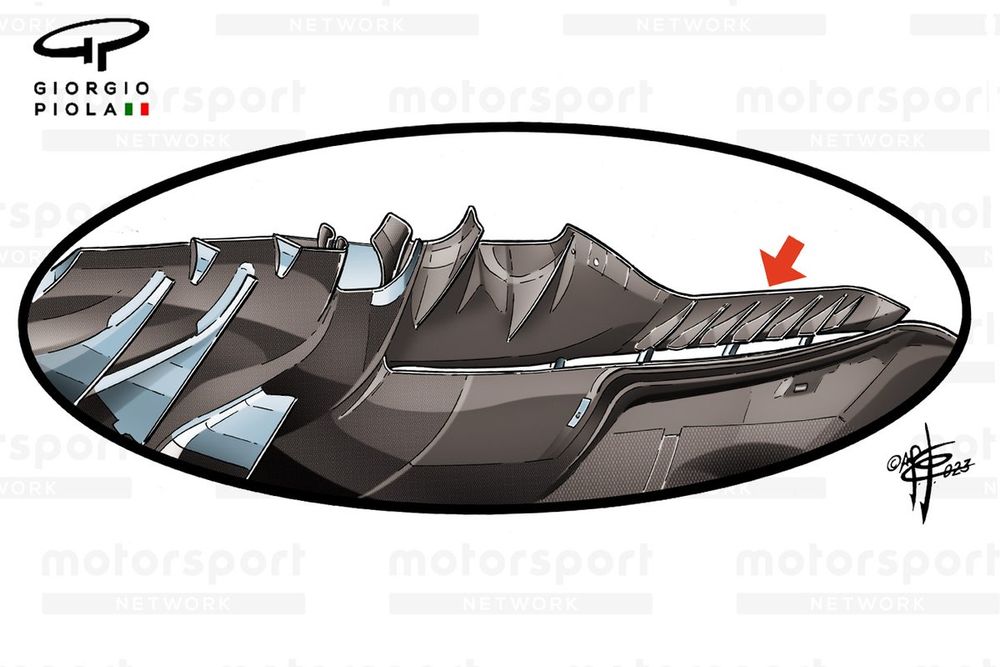Several drivers required medical attention after the race due to severe heat exhaustion symptoms, with Williams’ Logan Sargeant even retiring from the race with heatstroke.
While Qatar’s conditions were unusually extreme, the FIA pledged to find a rapid solution to avoid it from happening again.
The race itself has been shuffled further down the calendar from early October to the end of November for 2024, with cooler conditions easing concerns of a repeat.
However, in a bid to improve cooling to the cockpit, teams may now also add an additional scoop atop the chassis from next season.
This new driver cooling scoop, like the inlet that may be used in the tip of the nose, will be constrained in its dimensions to rule out any fringe aerodynamical benefits.
Given it’s another option for the teams and not one that’s only mandated for extreme conditions, they could even choose to use the scoop rather than the nose tip inlet, should it infer less aerodynamic sensitivity or reduce weight in a meaningful way to offset the more forward position.
Of course, they could also use a combination of both or pick and choose which options provide the best driver cooling versus aerodynamic performance for a given circuit.
The last team in recent memory to use a driver cooling scoop atop the chassis was Mercedes in 2014, when occasionally its vanity panel featured a small scoop (pictured, above), as the regulations permitted it at the time.
Interestingly, some teams didn’t even have the optional driver cooling aperture in the nose tip during the Qatar Grand Prix, which begs the question of whether or not every team should have a mandatory specification on hand should the need arise.
Photo by: Giorgio Piola
Red Bull Racing RB19 floor side detail
There are also changes within the regulations to limit the use of metal in the car’s floor, with components and inserts no longer permitted in the outer boundaries of the floor body, the edge wing and the fences. The obvious exceptions to this are the use of brackets or fasteners that are permitted between the floor and edge wing and any metallic components used for wear protection, providing they stay within the tolerances laid out within the new criteria.
The changes suggest that teams may have been using metal components and inserts as a means to control flexion and offer an aerodynamic benefit, but there might also be concerns about how this might create a debris issue in the event of…
Click Here to Read the Full Original Article at Autosport.com – Formula 1 – Stories…

